Varieties of white peonies and their cultivation

Peony is a flower found in many home gardens. Red varieties are considered the most popular, but white varieties can be called no less beautiful and in demand. They are characterized by the subtlety of aroma, tenderness and attractiveness of appearance.
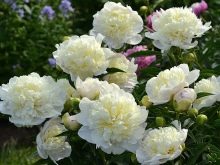
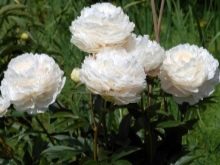
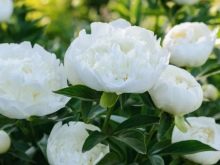
Peculiarities
Most flower growers prefer white peonies of different types and varieties. This flower is characterized by external splendor, sophistication of aroma, as well as the possibility of combination with other representatives of the flora. The disadvantage of a white peony is that when exposed to sunlight, the petals can fade, turn yellow and wither. The beauty of this flower is second only to a rose, but at the same time caring for the plant does not imply anything complicated.
The peony can reach a height of 30 to 150 cm. The bush of the herbaceous representative has large fluffy flowers, as well as juicy green foliage.
The flower feels great on any type of soil and does not need special care measures. A white peony is usually planted in a light lace shade. This royal flower is able to decorate any garden, personal plot.
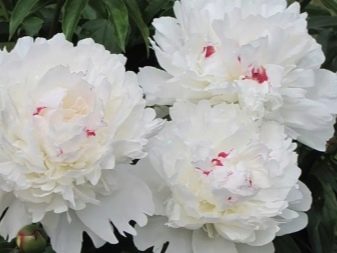
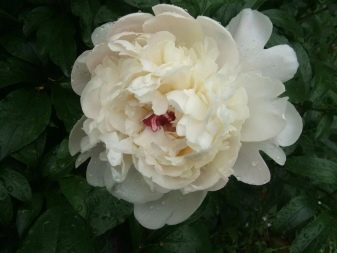
Peony comes in early, late and mid-blooming. The flower's aroma is strong, pleasant, but unobtrusive. White peony can have a lot of different shades. There are snow-white representatives, but more often those that have any shade, for example, ivory, cream, baked milk. In addition to the decorative value, this representative of the flora is used in medicine. It has found its application in bronchitis, tuberculosis, ailments of the liver and gallbladder, women's diseases.
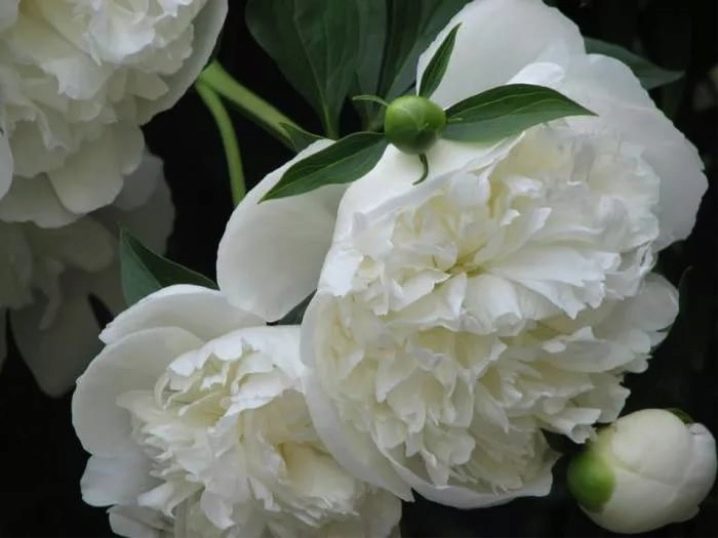
Popular varieties
A herbaceous white peony can be:
- terry;
- non-double;
- semi-double;
- Japanese;
- anemone.
In turn, a double flower can have the form:
- spherical;
- hemispherical;
- pinkish;
- semi-pink;
- crown.
Currently, flower growers grow not only the peony "Bai mu dan", "White crane", "Krinkled white", but also many others. The description will help the gardener in choosing a variety.
- White Cap. This variety is represented by unusual Japanese flowers, which are characterized by round outer petals of raspberry color, as well as inner twisted petals of milky white. The bud reaches 16 cm in diameter. The plant blooms profusely and for a long time. The representative prefers plenty of light and moderate watering. The variety has powerful, straight bushes up to 100 cm in height and exudes a pleasant aroma.
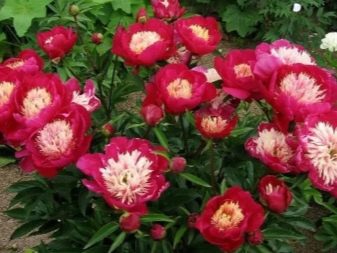

- "White Crane" considered to be the globular form of the plant. The bush reaches a height of about 0.9 m. The variety is fast-growing, it blooms in the middle of the season. The flower is white, 12-15 cm in diameter.
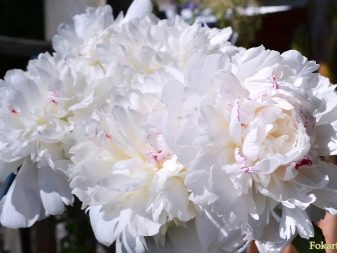

- Charles White - This is a variety of peonies, which belongs to the milky-flowered. The flowers are characterized by a white color with a subtle yellow tint. They are large single double and semi-double. The outer large petals are white, and the central ones are narrow, they have a creamy shade. The plant reaches a height of 1.2 m, the diameter of the bud does not exceed 17 cm. The flowering period of this herbaceous peony is early, at this time the plant exudes a pleasant aroma. The foliage of the variety is large and dissected.
Charles White is a durable variety that does not require transplanting for a long time.

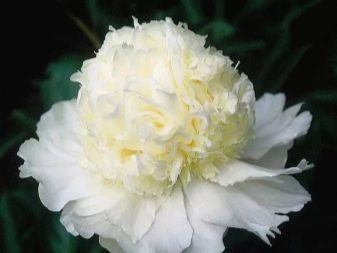
- Crinkled White Is a milky-flowered variety that has simple flowers with yellow stamens.The buds are large, at the beginning of flowering they are painted in a delicate carnation color, and then in snow-white. The petal of the plant is wavy, crumpled. The straight stem is long, strong and thin. The height of this peony reaches 0.9 m. The foliage is green. The variety has a medium flowering time and is excellent for cutting.
"Crinkled White" are peonies, which are some of the most beautiful non-double flora.
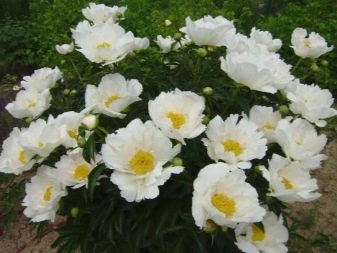
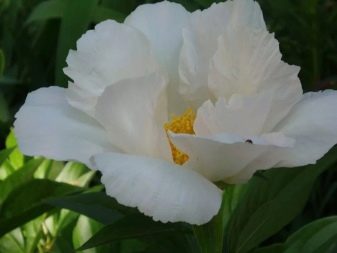
- "White Swan"... The name of this peony variety symbolizes freshness and purity. The flower of the plant is terry, it is spherical in shape, has a milky white color. The inner petal of a peony is much narrower than the outer one. The bud has a slightly greenish color and density. The flowering phase is long and plentiful, at this time the flower exudes a strong pleasant aroma. The bushes are powerful, spreading, they can reach a height of 0.8 m.
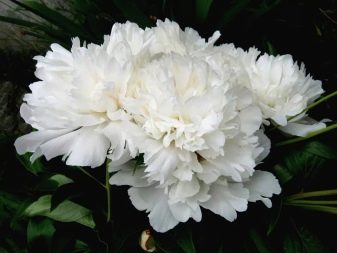
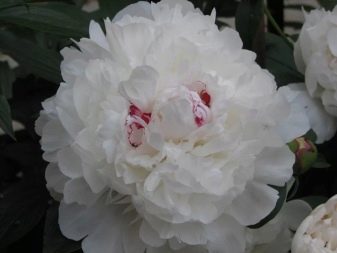
- "Anne cousins white" is the owner of beautiful double white flowers with a wonderful sweet aroma, its dark green leaves are dense. The shrub is characterized by vigor and vigor of growth, as well as large buds, therefore it needs support. The plant grows to a height of about 80 cm. Each year, more flowers appear on the bush compared to the previous year. "Ann cousins white" is a worthy decoration of the site.
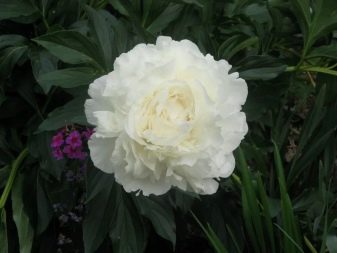
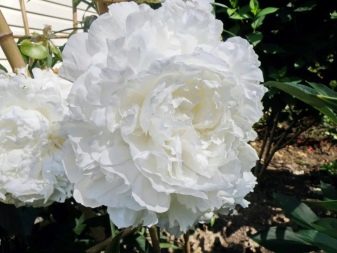
- "White Phoenix". This peony variety belongs to tree-like frost-resistant shrubs, its height can reach 200 cm. The plant has large rich green foliage. One bush can give up to 30 flowers, which reach 20 cm in diameter. This peony blooms for about 2 weeks. "White phoenix" belongs to the decorative species, as it has an unusual foliage shape. The shrub is unpretentious and does not create difficulties in growing.
The flower is white, but when blooming, it can acquire a pink tint. You can use this variety of peony not only with a single planting, but also with a group.
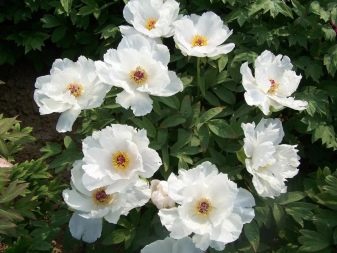
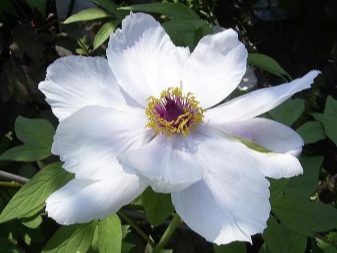
- Sarah Bernhardt is a late-maturing plant, the flowering period of which can last from 30 to 45 days. The buds of the plant are characterized by massiveness and are located singly, their diameter is 15–20 cm. The petals of the flower are of a double and semi-double concave type, painted white with a pink tint. The stem is long, strong, it can be up to 100 cm long, quite resistant to lodging. The green foliage has a dissected shape. The aroma of the variety is bright, juicy and pleasant.
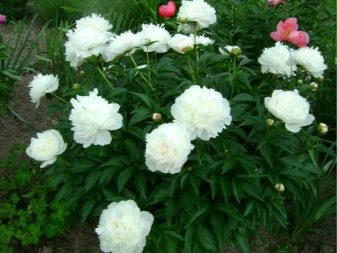

- "White Wings"... The variety of this plant can be attributed to the milky-flowered herbaceous representatives. Its leaves are green with a characteristic sheen. The stem is strong, but needs support in rainy weather. Simple white flowers with corrugated petals of rather large size. In the center of the flower are yellow stamens. During the flowering period, the plant exudes a pleasant, light aroma.
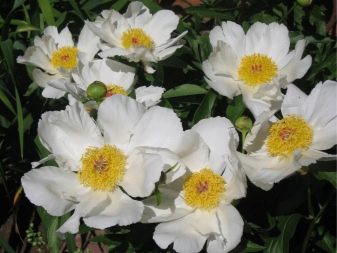
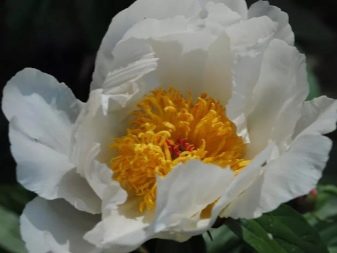
- "White Emperor" has white semi-double flowers, which are characterized by the presence of light purple flashes in the center. The stem of the plant is quite strong, in height it can reach 0.75 m.


Landing
The best time to transplant a white peony is autumn. During this period, the plant can easily take root in a new territory. The choice of a place should be stopped in an open area that is well lit by the sun. Preparation should be done a few weeks before planting. The first step is to dig a shallow hole and fill it 2/3 with a mixture, including:
- peat;
- humus;
- soil;
- sand.
And also in the substrate it is worth adding 0.5 liters of birch ash, a glass of superphosphate and a large spoonful of ferrous sulfate.

Digging up the rhizome of the peony must be done with great care. To do this, use a garden pitchfork.
- The bush is dug around quite deeply, after which, with the help of shovels, the bush is pulled out of the ground.
- The peony should be washed with water to ensure that the adhering earth is removed.
- The dug out flower must be sent to the shade for 5 hours, after which the stem should be cut off 0.1 m from the root system.
- The next step is to divide the peony. Using a sharp knife, it is necessary to divide the rhizome into parts, in which there are few roots and 3-4 buds.
- After a careful examination, it is worth removing roots that are rotten or damaged.
- Before the planting procedure begins, the root system of the peony is placed in a manganese solution, and the cuts are sprinkled with crushed coal and dried.
- In order for the flower to take root well, it should be dipped in heteroauxin and then dried.
- Landing in the hole is carried out in such a way that the buds are located 3-5 cm above the soil surface. The roots are sprinkled with a substrate and mulched with peat.
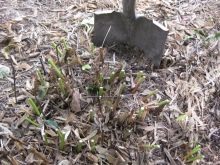


Care
The peony is considered a couch potato plant, so it does not need frequent transplants. That is why the place for the growth of the plant should be selected responsibly so that the bush does not have to be disturbed. After 10 years have passed since planting, the peony should be dug up, its rhizome divided into parts and planted.
This flower needs good watering, but excessively moist soil is destructive for it. Fertilizers must be present in the substrate with which the hole is poured during planting, so the peony is not fed for the first couple of years. It is worth paying attention to the soil near the plant: it should not be compacted and requires loosening. Preparing a peony for winter requires pruning and good cover.
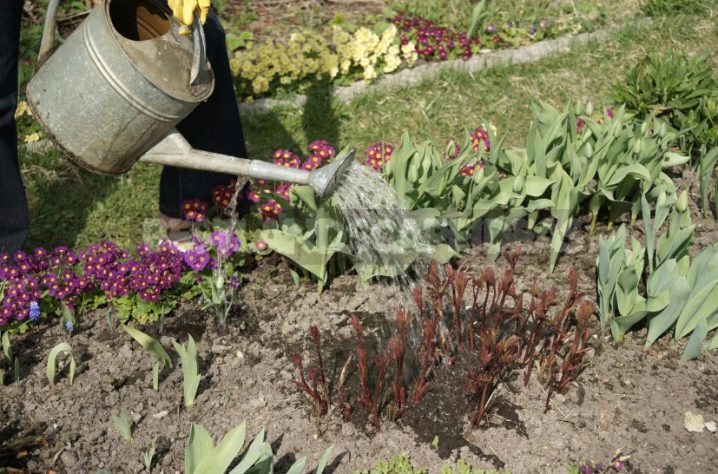
Reproduction
A decorative white flower is propagated using:
- seeds;
- cuttings;
- bush division.
Seeds of peonies are propagated by breeders. This procedure is quite lengthy and laborious. When a plant is propagated using root cuttings in the middle of summer, a part of the root with a dormant bud is separated from the flower. The planting material is planted in a prepared hole, where it will take root and bloom in 5 years.
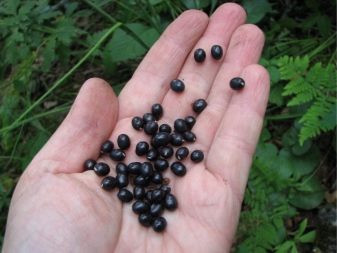
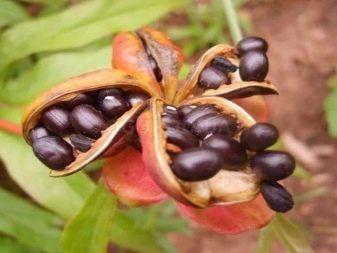
The simplest and fastest method for propagating a peony is to divide the bush. For this, it is worth giving preference to a plant of 3 years old. The dug out bush is divided and planted. Further, it is worth taking care of the shrub in order to end up with a beautiful flowering plant.


Diseases and pests
Most often, peonies attack fungal and viral diseases. The most common are:
- gray rot;
- rust;
- spotting of various types.

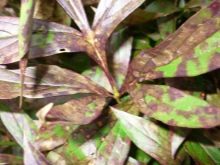

Common viral infections include:
- tobacco rattle virus;
- ring strawberry spot;
- cucumber mosaic;
- alfalfa mosaic.
Often, the white peony suffers from more than one ailment, it is attacked by several diseases at the same time, so treatment is difficult. Infectious diseases can be transmitted by contact, for example, using planting material, through soil, gardening tools and insect pests.
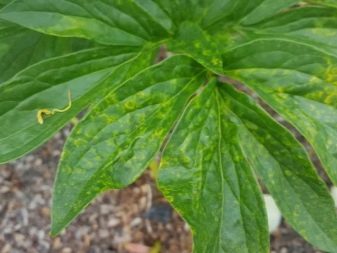

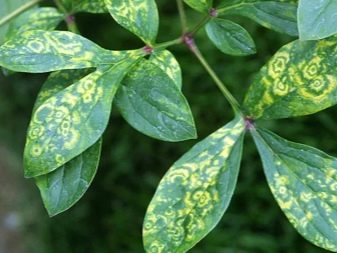
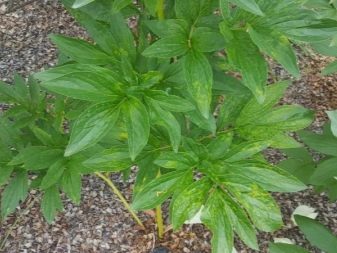
The main reasons for the development of a fungal disease include a high level of air humidity. Gray mold and rust often attack the plant in rainy weather. Fungal diseases develop when there is a large amount of nitrogen in the substrate and planting shade.
If the peony is affected by rust, then the florist should immediately remove the affected foliage and spray the bush with Bordeaux liquid. This solution is considered effective in combating gray mold. As a preventive measure, it is worth getting rid of ants that can carry infection. Powdery mildew can be eliminated by spraying the plant with a 0.5% soda ash solution. This treatment should be carried out 2 times in 8-10 days.

In addition to diseases, the white peony can suffer from parasite attacks.
- Bronze beetle... The insect lives in manure, on plant debris, feeds on pistils, stamens, bud petals. To eliminate the parasite, the bush should be sprayed with hellebore tincture in conjunction with chemicals.
- Gall nematode. It attacks the root system of the plant and infects it.The vital activity of the insect leads to the appearance of nodes on the roots of the peony, which decay over time and cause the death of the flower. The fight against the nematode is quite difficult, so flower growers should think about preventive measures. It is recommended to regularly inspect the roots of the peony, carefully choose the material for planting, as well as fertilize the bush and eliminate plant residues.
- Sod ant. This insect can cause irreparable harm to the peony, it eats the petals of the flower and its secretions. To eliminate the pest, it is necessary to use specially designed deterrent agents.
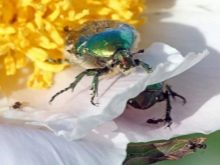


Examples in landscape design
White peony looks great on open green lawns. When drawing up garden compositions, it is worth shading light buds with dark plants. Iris of a dark blue color, as well as crown lichnis, are perfectly combined with this representative of the flora. For the composition to be considered complete, not far from a white peony, it is worth planting undersized flowers or, conversely, tall trees.
A good option for a garden composition is to plant shrubs on the outskirts of the site, placing low garden flowers between them.
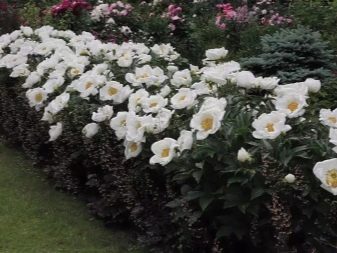
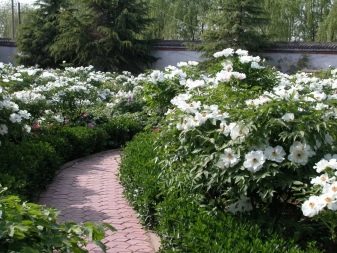
For a tree-like white peony and its planting in autumn, see below.







































































































The comment was sent successfully.